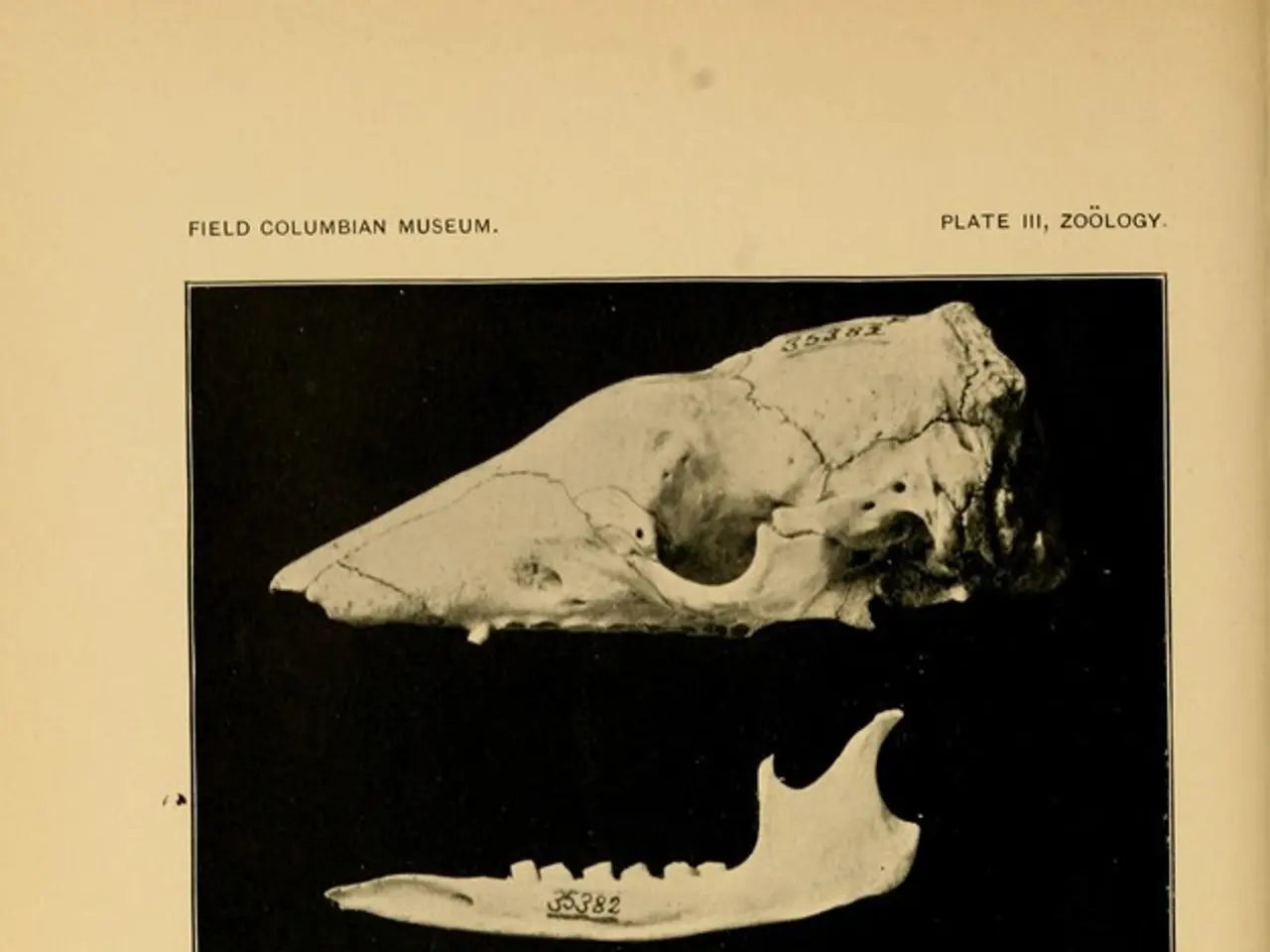Essential Foods Rich in Calcium: Crucial for Strong Bone Development
## Non-Dairy Calcium-Rich Foods for Adolescents and Kids in India: A Comprehensive Guide
In India, a variety of non-dairy foods offer a wealth of calcium, making them excellent choices for children and adolescents who are lactose intolerant, vegetarian, or simply seeking to diversify their diet. Here's a closer look at some of the best options and practical ways to incorporate them into daily meals.
### Excellent Non-Dairy Calcium Sources
- **Ragi (Finger Millet):** With up to 344 mg of calcium per 100 grams, ragi is a standout choice, offering more calcium than most cereals and even some dairy products[1][4]. The calcium in ragi is highly bioavailable, especially when consumed as porridge, chapatis, or in fermented forms like dosa batter[1][4]. - **Tofu:** This plant-based protein source is not only rich in calcium, iron, and other minerals, but also supports both bone and overall health[3][4]. It can be used in curries, stir-fries, or as a paneer substitute in Indian dishes. - **Sesame Seeds:** Packing a calcium punch, sesame seeds can be added to chutneys, sprinkled on salads, or used in traditional sweets like til laddoos for children[4]. - **Almonds:** In addition to being high in healthy fats and protein, almonds offer a good amount of calcium and magnesium, both important for bone strength[4]. A daily handful can be a nutrient-dense snack for kids. - **Beans and Legumes:** Chickpeas, mung beans, and soybeans are good sources of calcium[2]. For example, raw mung beans provide about 132 mg of calcium per 100 grams. Hummus (made from chickpeas) or boiled beans added to curries and soups are kid-friendly options[2]. Soy milk is also a viable dairy alternative with added calcium[3]. - **Green Vegetables:** Broccoli and green peas contain notable amounts of calcium. Broccoli can be incorporated into momos, pasta sauces, or pizzas, while green peas can be added to pulao, curries, or eaten as a snack[2]. - **Fish (for non-vegetarians):** Canned fish like salmon, sardines, and tuna are calcium-rich options for those who include fish in their diet[2].
### Practical Ways to Incorporate These Foods
- **Breakfast:** Start the day with ragi porridge or dosa, or add a handful of almonds to cereal[1][4]. - **Snacks:** Offer hummus with vegetable sticks, til laddoos, or a small bowl of boiled beans. - **Main Meals:** Include tofu in curries, use sesame seeds in chutneys or as garnishes, and add green peas or broccoli to rice dishes and sandwiches. - **Desserts:** Prepare traditional sweets with sesame or almond bases for a calcium boost. - **Soy Products:** Use soy milk in smoothies or cereal, and include tofu in various cooked dishes.
## Comparison Table: Calcium Content in Common Non-Dairy Foods
| Food Item | Approx. Calcium (per 100g) | Notes | |-------------------|----------------------------|----------------------------------------| | Ragi (Finger Millet) | 344 mg | Highly bioavailable, gluten-free[1][4] | | Mung Beans (raw) | 132 mg | Soak or boil before eating[2] | | Soybeans/Tofu | Varies (check label) | Good protein source[3][4] | | Sesame Seeds | High (varies by form) | Use in sweets, chutneys[4] | | Almonds | ~250 mg | Also rich in healthy fats[4] | | Broccoli | ~47 mg | Nutritious, versatile[2] | | Green Peas | ~25 mg | Add to various dishes[2] |
## Key Considerations
- **Bioavailability:** Calcium from plant sources like ragi and leafy greens is well-absorbed, especially when the food is sprouted or fermented[1]. - **Variety:** Combining different calcium-rich foods ensures adequate intake and provides other essential nutrients. - **Fortified Foods:** Some packaged foods (e.g., soy milk, cereals) may be fortified with calcium—check labels for content.
By incorporating ragi, tofu, sesame seeds, almonds, beans, green vegetables, and fortified soy products into daily meals, Indian children and adolescents can meet their calcium needs without relying on dairy[1][2][4]. Additionally, it's important to note that maintaining a balanced diet, rich in calcium, vitamin-D, and magnesium, is crucial for optimal bone health. Keeping a 100% stock of calcium and consuming it every day becomes imperative.
[1] https://www.ncbi.nlm.nih.gov/pmc/articles/PMC6527163/ [2] https://www.ncbi.nlm.nih.gov/pmc/articles/PMC6901036/ [3] https://www.ncbi.nlm.nih.gov/pmc/articles/PMC6868995/ [4] https://www.ncbi.nlm.nih.gov/pmc/articles/PMC6655056/
- Science has provided a wealth of options for calcium intake, as investigations in health-and-wellness have uncovered numerous non-dairy sources.
- Fitness enthusiasts may find that a balanced diet is augmented by the inclusion of nutrient-dense, non-dairy foods.
- Global cuisines offer a vast array of calcium-rich dishes, such as sesame-seed-based sweets or tofu stir-fries, promoting diverse dietary practices.
- Mental-health professionals recommend a well-rounded lifestyle that incorporates healthy eating and regular exercise, which can be supplemented by the intake of calcium-rich, non-dairy foods.
- Mens-health magazines often highlight the importance of exercise and proper nutrition, particularly for maintaining bone health; including non-dairy calcium sources in the diet is an essential part of this conversation.
- Skin-care experts argue that good overall health, including adequate calcium intake, contributes to healthy, vibrant skin.
- Womens-health publications often discuss the importance of calcium for bone health and overall well-being; non-dairy options serve as practical solutions for those with lactose intolerance or dietary restrictions.
- A healthy lifestyle includes cooking nutritious meals, and incorporating calcium-rich, non-dairy foods into daily recipes is a simple way to meet nutritional needs.
- Lifestyle blogs frequently explore the benefits of a plant-based diet, and non-dairy calcium sources are essential elements in such discussions.
- Food-and-drink enthusiasts appreciate the variety offered by global cuisines, making non-dairy calcium sources appealing additions to their culinary journeys.
- The pursuit of knowledge in the field of science leads us to explore the beauty of nature, and this exploration often includes the examination of non-dairy calcium sources.
- Pets have unique dietary needs, but pet-owners can ensure their companions receive adequate calcium through the incorporation of calcium-rich, non-dairy foods.
- Travel involves experiencing diverse cultures and cuisines, and the exploration of non-dairy calcium sources is an exciting part of this adventure.
- Auto-racing champions value fitness and nutrition for peak performance; including non-dairy calcium sources in their diet contributes to their overall well-being.
- Mixed-martial-arts fighters recognize the importance of mental and physical health; the inclusion of non-dairy calcium sources in their diets supports both domains.
- Sports-betting experts emphasize the importance of making informed decisions, and understanding the nutritional needs of athletes can provide insight into their performance.
- The art of golf requires precision, concentration, and physical fitness; non-dairy calcium sources are an element in maintaining the mental and physical prowess necessary for the sport.
- Hockey players rely on agility, strength, and speed; fueling their bodies with non-dairy calcium sources, along with proper nutrition and exercise, supports peak performance.
- Basketball stars must have immense endurance and focused concentration; the inclusion of non-dairy calcium sources in their diets supports the mental and physical demands of the sport.





